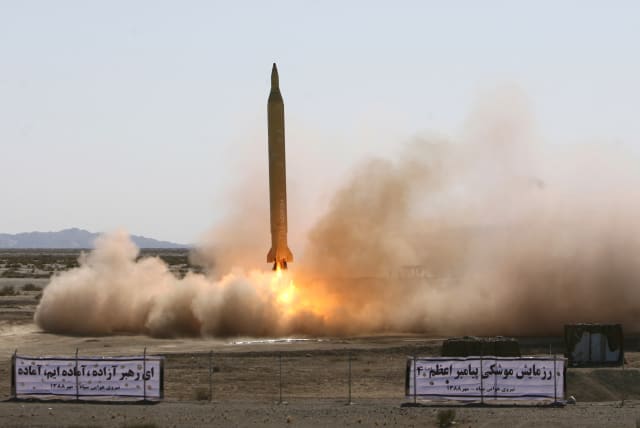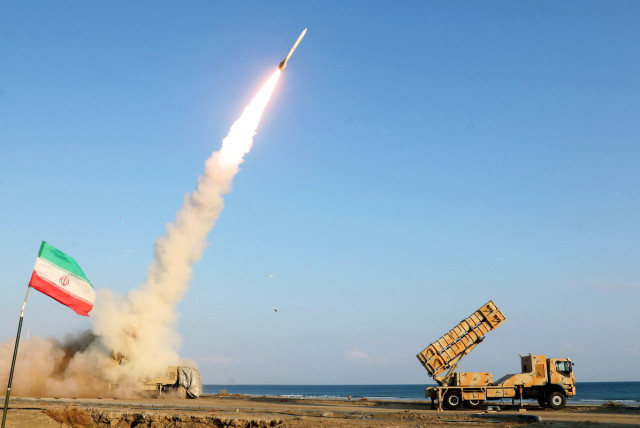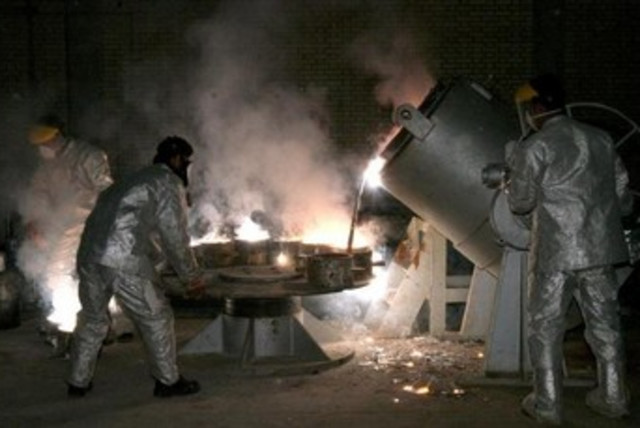Close to midnight on an Iranian nuke – what matters now and what doesn’t - analysis

This came after multiple top US officials said that Iran could jump from the 60% medium uranium enriched level to the 90% level in 12 days.
Iran is closer to nuclear “midnight” in being able to obtain nuclear weapons than it has ever been before.Note that the talk has shifted from weapon (singular) to weapons (plural).
Defense Minister Yoav Gallant said Iran had enough enriched uranium to produce 90% weaponized uranium for up to five nuclear bombs in short-shift if it decided to do so.
This came after multiple top US officials said that the Islamic Republic could jump from the 60% medium uranium-enriched level to the 90% level in 12 days.
What matters vs What doesn't?
With those facts out there, we must ask: What matters at this point – from pieces of two IAEA leaked reports and information obtained by The Jerusalem Post from a source involved in negotiations with Iran, as well as other recent disclosures – and what does not?
It seems from the IAEA reports that the agency and the West are going to close or shelve their probe into how and why the Islamic Republic produced a small amount of 84% enriched uranium molecules in February.
This is significant in a negative way for Israel because Jerusalem briefly thought that the violation was so blatant and so close to the 90% weaponized level that it might finally rally the West, and possibly even Russia and China, to act more decisively to freeze and even rollback Tehran’s nuclear program.
Though the probe does not seem to be completely closed, the fact that it is being tabled means the West is still afraid to go into a full confrontation with the ayatollahs.
The Post understands that many Western countries believe that a referral to the UN Security Council to snap back global sanctions would fail.
They worry that in the current political climate where the East and West are divided over Russia’s invasion of Ukraine, that Moscow, Beijing, and others would refuse even a binding vote of the UN Security Council (Russia and China gave up their veto on this specific issue as part of the 2015 Iran nuclear deal.)
If so, the West would rather keep that “bullet” in the “chamber” as a threat to fire, since Tehran would not know for sure how everything would play out.
The possibility that the IAEA might shelve its probe into the undeclared Marivan/Abadeh nuclear site is also less important.
No one expected that the probe by itself would lead to major new pressure on the ayatollahs or that shelving it would lead to the opposite – a return to the 2015 JCPOA deal.
What really matters with the IAEA these days is whether they keep some probes open, as that impacts whether there will be a return to the nuclear deal, and how much access it has to maintain surveillance on Iran’s nuclear program.
There is some good news in the report in Iran granting the IAEA some additional surveillance within the underground Fordow nuclear facility.
Many observers have worried that Tehran would use Fordow to sneak out to a nuclear weapon.But IAEA inspectors have been blind on a lot of what Iran has been doing in the nuclear realm in some areas for a year, and in others for much longer.
It is quite possible that the Islamic Republic had concealed critical elements of its nuclear program at other new sites.
Maybe the least important issue in the report is that Iran now has 23 times as much uranium as allowed by the JCPOA.
This is not really new and important because it has had enough uranium for a nuclear weapon at low enriched levels since early 2020 and at higher levels – possibly only four weeks away from a bomb – since late 2021.By mid-2022, Tehran had potentially enough enriched uranium to jump within a matter of months to four nuclear weapons.
Once all of these levels were breached: one weapon, multiple weapons – whether Iran has enough for five or a few more is not all that significant because it already has crossed certain thresholds.The main danger then becomes detecting whether Iran actually starts advancing “weapons group” activities to be able to detonate and deliver the enriched uranium – something which still gives the West and Israel more time to act as things currently stand.
There is no real information on this from the IAEA. Israeli defense officials said this past month that the weapons group was making advances, but nothing substantial enough to require the Jewish state to act quite yet.The most important issues remaining at this point are probably keeping an eye on whether Iran jumps to 90% weaponized uranium, the weapons’ group progress, and on Iran’s building of a new underground facility at Natanz even deeper than Fordow.
Jerusalem Post Store
`; document.getElementById("linkPremium").innerHTML = cont; var divWithLink = document.getElementById("premium-link"); if (divWithLink !== null && divWithLink !== 'undefined') { divWithLink.style.border = "solid 1px #cb0f3e"; divWithLink.style.textAlign = "center"; divWithLink.style.marginBottom = "15px"; divWithLink.style.marginTop = "15px"; divWithLink.style.width = "100%"; divWithLink.style.backgroundColor = "#122952"; divWithLink.style.color = "#ffffff"; divWithLink.style.lineHeight = "1.5"; } } (function (v, i) { });


